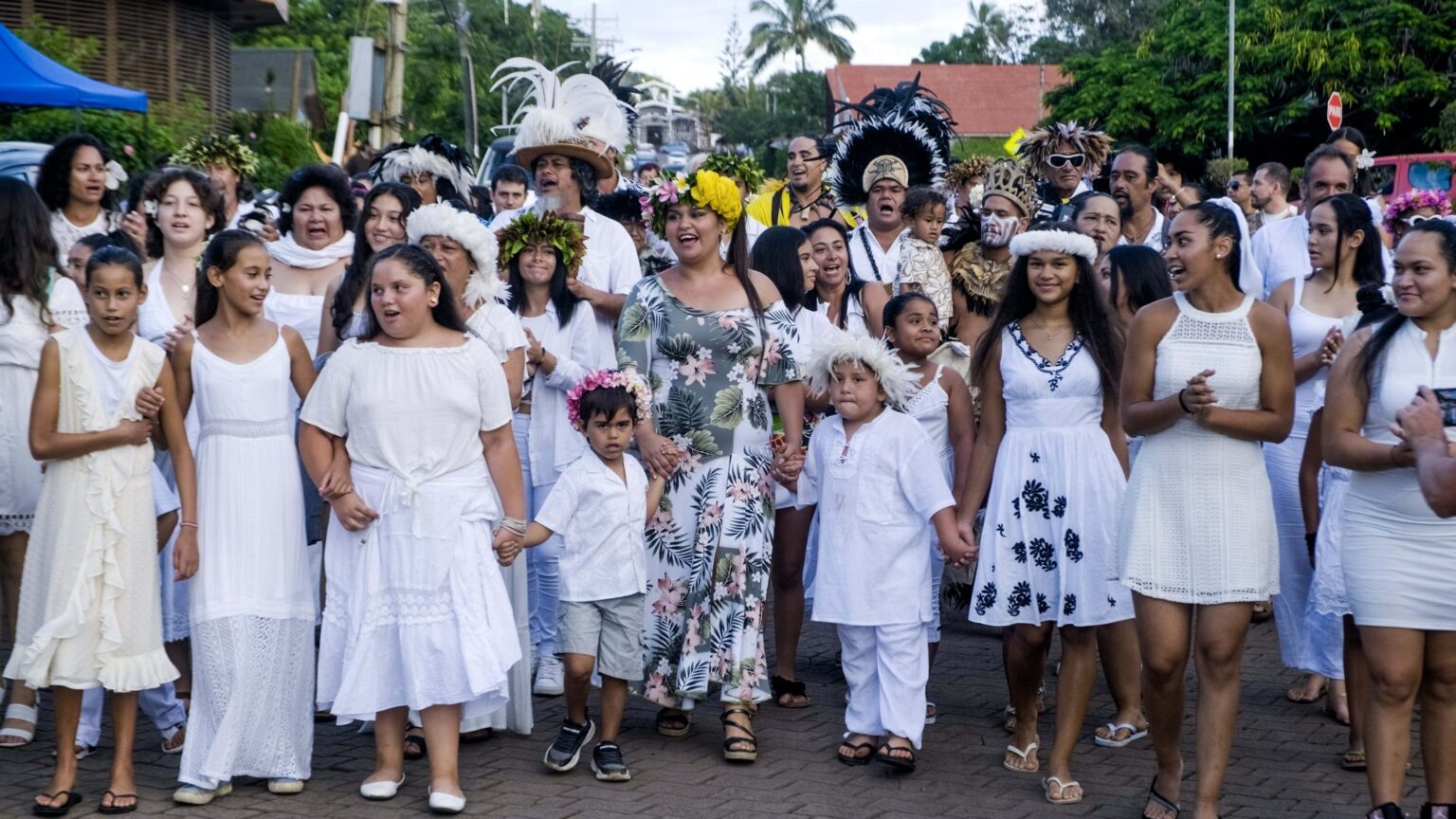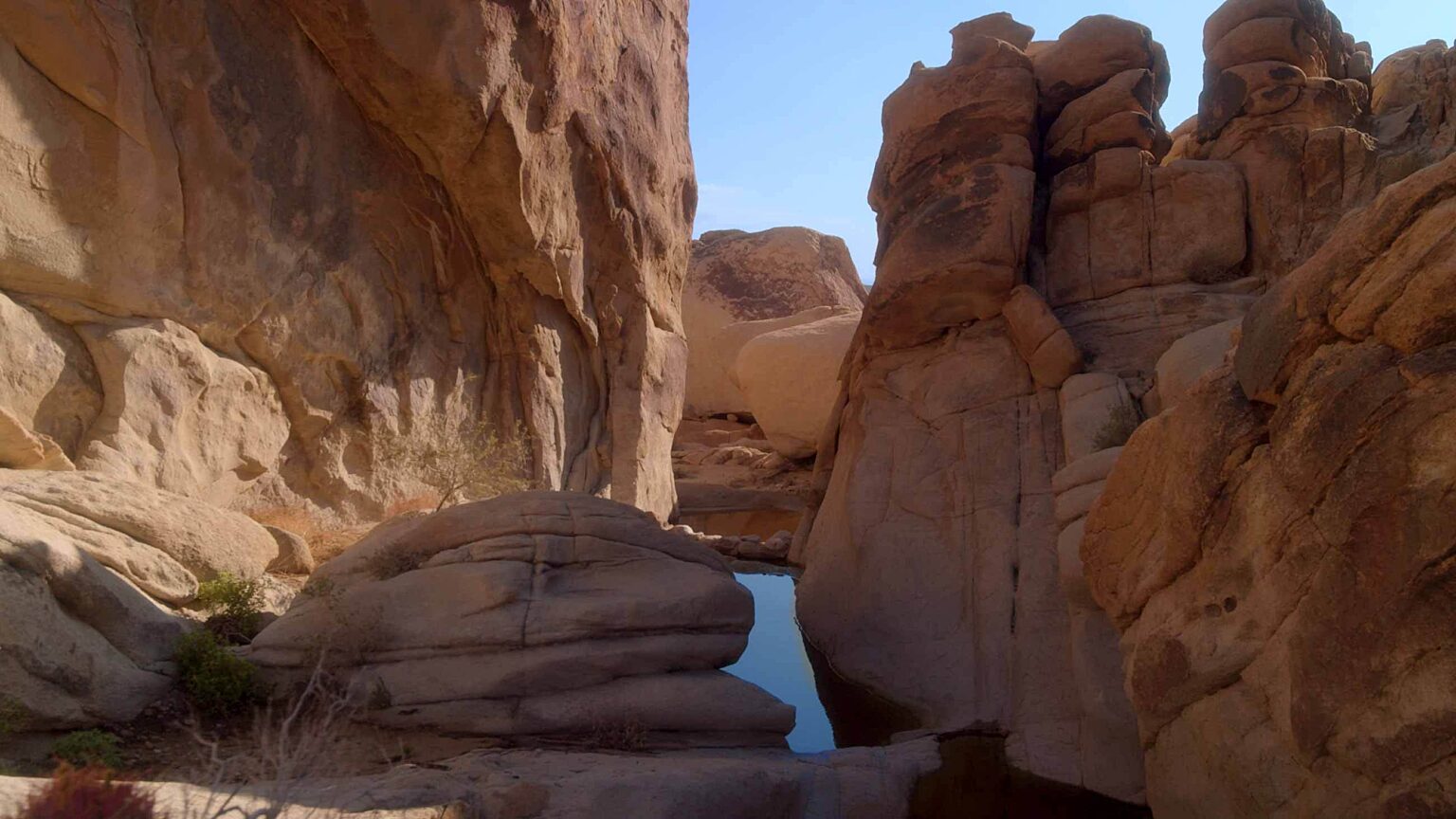Wayfinders Circle Te Pito o Te Henua

Te Pito o Te Henua (The Navel of the World)
2024 | Documentary Short | 29 MIN. 55 SEC.
Directed by Martin Kingman (Ecuador) and Nils Cowan (CA/USA)
An indigenous community on the most remote inhabited island in the world prepares to host its most important annual celebration, and reinforce deep connections to their culture, language and land.
Te Pito o Te Henua (The Navel of the World) explores the cultural identity and close connection to the land and water shared by the Rapa Nui People through a visceral, behind the scenes exploration of the island’s most important cultural festival – Tapāti Rapa Nui.
The film presents interwoven storylines that bring the true meaning of the Tapāti Festival to life as well as its deep connection to the Rapa Nui people and their unique island and culture. A young Rapa Nui woman competing for the title of Queen, a first-time Festival Director, and a wisdom keeper bring Rapa Nui and its most important cultural festival to life. Through intense physical competitions, demonstrations of traditional practices, and festive cultural activities for the public, the efforts of these three participants reveal the full significance of Tapāti – to bring the Rapa Nui together in reclaiming their cultural, environmental and economic power. In their first major event after the COVID-19 pandemics, the People of Rapa Nui strive to create the most authentic and memorable Tapāti Festival possible in the effort to maintain and protect their language, culture, land and water. Juxtaposing the colorful outward displays of the festival and the care and efforts of the team behind the scenes, the film reveals how much the festival means to the island and how closely it is tied to their way of life.
Directors’ Statement
For many schoolchildren, especially those who grew up in the west, the mythic “Easter Island” and its stone “heads” is a visceral memory from history class. Pictures of carvings and petroglyphs taken from the remote island, and stories of the “fierce warrior clans” who lived there and competed for power told of an otherworldly place, always frozen in the past. Missing from those narratives, in addition to the true name of the island, was the incredible ingenuity and complexity of the Rapa Nui culture, its attachment across vast ocean networks to other Indigenous Peoples of the Pacific, the brutal trauma and land degradation that started the moment Dutch Navigators set foot on the island they had “discovered”, and any sense whatsoever of the power, spirit and ongoing cultural and environmental preservation work of the modern Rapa Nui.
From the moment we began meeting with filmmakers and producers from the island more than two years ago, it was clear that the story we wanted to collectively tell was one that had been tried many times before – the story of their most important outward-facing cultural moment, the annual Tāpati Rapa Nui Festival. Across decades of TV specials, hosted archaeology series, and sports drink-funded competition shows, none of these specials had managed to properly capture the family and community story at the heart of the festival. A product of deep collaboration, Te Pito o Te Henua (The Navel of the World, a common self-given nickname for the island), is our shared effort to show the joy and unity of Tāpati, and how this work translates to self-determination, land and ocean guardianship, and cultural revitalization among youth.
Martin Kingman
Documentarian Martín Kingman was born near Macas, Ecuador, between the eastern side of the Andes and the northwestern edge of the Amazon basin. As a child, his parents worked as part of a growing social movement to establish strong local Indigenous governments to provide autonomy and land protection. Drawn to the waters of the many rivers snaking throughout the region, he became a strong swimmer and was named to the Ecuadorian Olympic swim team in his youth. He also became enamored with photography and followed his older brother, nature photographer Santiago Kingman, into the animal and human communities of the area.
In the early 2010s he gave up swimming and decided to pursue visual storytelling full time. He enrolled in writing and filmmaking courses at the Universidad de Las Americas, and then the INCINE Institute in Quito. Since graduating, Martin has dedicated himself to partnering with the indigenous peoples of Ecuador and Peru, bringing to life for audiences around the world the thriving cultures of the Waorani, Siona, and Achuar Nations, among others. He has shot and directed dozens of films of different lengths as well as impactful ad campaigns, including recent PSAs that helped pass the historic vote to ban oil exploration in Indigenous-held Yasuni National Park.
Nils Cowan
Nils Cowan is a documentary producer/writer with twenty years of experience working on award-winning original features and shorts for diverse audiences. Born and raised in Calgary, Canada, trained in the documentary industries of New York and DC, and now a leader in the thriving film scene of the Pacific Northwest, Nils’ work has focused on uplifting and amplifying underrepresented stories and perspectives. He currently lives with his wife and two kids in Issaquah, Coast Salish Territory, Washington.
Vaitiare Flores Riroroco

Born in the town of Hanga Roa on Rapa Nui, Vaitiare “Vai” Riroroco is a member of the Riroroco and Teao ancestral families of the island, and a direct descendant of the last Rapa Nui King Riro Kāinga. Vai (which means “water” in Rapa Nui) is the “Uka” or candidate to become queen of the Tāpati Rapa Nui Festival, an important cultural position that comes with important responsibilities for safeguarding their land and culture. Since participating in the film, Vai has gone on to represent her people at cultural gatherings and diplomatic meetings across the island and throughout Pasifika.
Irene “Veri” Teave Tuki

A self-described ‘Daughter of the Land’, Veri has served in multiple positions in the Rapa Nui municipal government and cultural organizations. Queen of Tāpati in 2014, Veri went on to represent Rapa Nui in the Miss Chile competition, finishing as runner up and helping to increase visibility for her People. In 2022, she was named Director of the important Tāpati Rapa Nui Festival, an especially critical role as Rapa Nui prepared to open its borders following the Covid-19 pandemic. Continuing in this important role, Veri remains dedicated to improving the lives and increasing the autonomy of all Rapa Nui.
Lynn Rapu

Lynn Jaime Rapu Tuki (born 9 December 1969) is a practitioner and promoter of the arts and traditions of the Rapa Nui People, and head teacher and founder of the Ma'aranui Cultural Academy and the Cultural Ballet Kari Kari. He serves as Cultural Ambassador of Asia-Pacific and has been Head of the Liaison Office of the National Council of Culture and the Arts (CNCA). Rapu is also a veteran navigator having made many journeys throughout the Pacific using traditional navigation methods, and continues to train young Rapa Nui seafarers on these skills. He and his wife, Chinese born anthropologist Maima Tching Chi Yen, founded the Rapa Nui Ao Tupuna foundation in 2012, committed to connecting the youth with their ancestors. They have two children together, Hopumanu and Analola.
Gina Pakarati

Icha, daughter of the forest, has grown up with the trees, animals and waters that surround her Longhouse home. One of nearly 300 residents of the Sungai Utik village, she has been learning about the customary ways to harvest plants and animals, how to weave the baskets and colorful cloths that are central to the work of the community, and how to leverage modern tools like GPS and cutting edge camera equipment to study and preserve the forest. She has also been learning about the lessons and powers of the Omen Birds of the forest, whose wisdom has always guided the Iban Dayak Indigenous peoples of Central Borneo. This is Icha’s first time participating in a film project with her village.
Pedro Pablo Edmunds Paoa

Mayor Pedro Edmunds Paoa is one of the most important Indigenous leaders in Chile. The son of a prominent Rapa Nui politician, he has been a key figure in the life of the Island since 1990. With the social explosion, he became part of those who sought the creation of a new constitution. For the first time, he managed to unite Indigenous mayors in an association. Mayor Paoa’s most lasting government program has been the community-driven Plan A.M.O.R. (Autosustentabilidad (self-sustainability), Mejoras Continuas (continuous improvements), Optimización de Recursos (optimization of resources), and Respeto (Respect)), which was recognized as part of the 20/30 agenda of the United Nations. The plan was put into effect for the first time at the onset of the Covid-19 pandemic when Mayor Pedro Edmunds Paoa made the bold decision to close Rapa Nui to tourism and invoke the TAPU (Taboo) which is an ancestral call to order, resulting in only three cases on the island, even as families were reunited. His direct style has placed him as one of the most credible politicians in Chile, as he prepares to serve another term as Mayor.
South Film Arts Academy Festival
Date: December 2024
Location: Chile
26th Madurai International Documentary and Short Film Festival
Date: December 2024
Location: India
Moss Farm in Montreal
Date: January 2025
Location: Montreal, Canada
FIFO
Date: January, 31st 2025
Location: Tahiti
FLIC
Date: February 2025
Location: Polson, MT
Maoriland
Date: March 2025
Location: Ōtaki, Aotearoa (New Zealand)
Fargo Film Festival
Date: March 2025
Location: Fargo, ND
Here you can download the press notes, containing comprehensive information and insights into the making of the film, the people involved, images, contact and other information for press.
The Municipality of Rapa Nui is located in the southeast Pacific. It is an Indigenous territory on a small island in the middle of the Pacific Ocean, about 3,800 kilometers from Chile and 4,000 kilometers from Tahiti. The island covers approximately 16,360 hectares and is home to 36 family clans. Rapa Nui boasts the largest Multiple Use Marine Protected Area in Chile, spanning 728,000 square kilometers.
In 1966, following persistent protests and demands by the Rapa Nui people, the State of Chile recognized them as citizens with rights through the creation of the Department of Easter Island and its Municipality. The Rapa Nui Municipality is part of the official government at the State level and collaborates closely with both traditional and new leaders to address the needs of the Rapa Nui people.
Rapa Nui National Park comprises 40% of the island's territory, including four nearby islets. The park is a testament to an undeniably unique culture, with its most eminent features being the archaeological sites. The island has a high concentration of these sites, with an estimated 900 statues, over 300 ceremonial platforms, and thousands of agricultural, mortuary, housing, productive, and other structures. Many of the sacred and spiritual sites of the Rapa Nui people are located within the park. In 1995, Rapa Nui was declared a World Heritage Site by UNESCO, recognized for its Exceptional Universal Value. The World Heritage Committee included the park on the list, highlighting the remarkable and unique cultural phenomenon it represents.
The Rapa Nui people are working towards creating their own government with constitutional recognition, which will allow them to effectively exercise their rights to self-determination. Food, a healthy environment, a spiritual connection with the land, and life in society are essential for the Rapa Nui.
To learn more and connect with the Rapa Nui, click here.
We would love to hear from you! Please fill out the form below to get in touch regarding any film-related inquiries, feedback, or collaboration opportunities.
